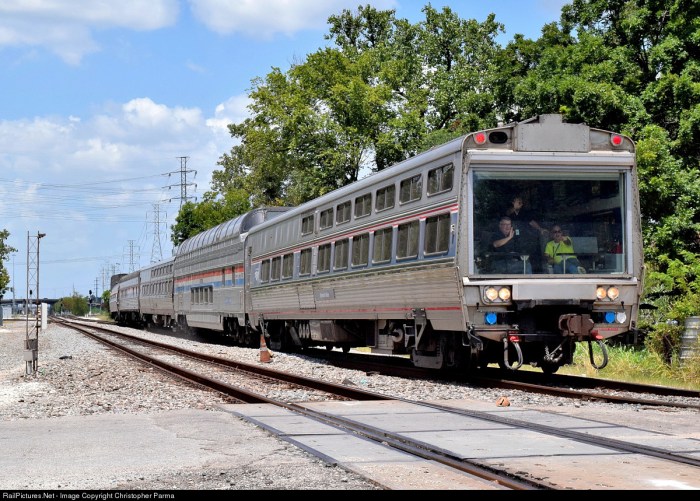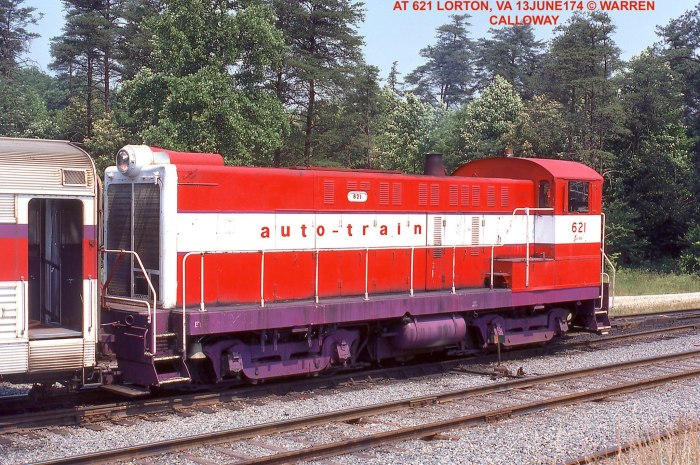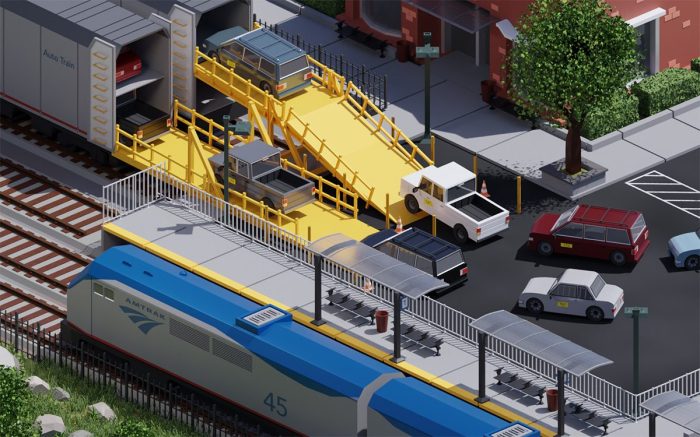Autotrain, a revolutionary mode of transportation, has emerged as a transformative force, seamlessly integrating automobiles and railways. Its journey, spanning decades of innovation, has redefined the landscape of transportation, offering a compelling blend of efficiency, convenience, and sustainability.
Autotrains, characterized by their unique ability to carry both passengers and vehicles, have evolved into diverse configurations, each tailored to specific applications. From high-speed intercity connections to freight transportation, autotrains have proven their versatility and adaptability.
Definition and Overview

An autotrain is a specialized type of train designed to transport automobiles and their passengers over long distances.
Autotrain provides a comfortable and convenient way to travel between major cities. If you’re planning a trip to Bergamo , for example, you can take the autotrain from Milan to Bergamo in just over two hours. This is a great option if you’re looking to avoid the hassle of driving or taking a bus.
The autotrain is also a great way to relax and enjoy the scenery along the way.
Autotrains have become increasingly popular due to their convenience and cost-effectiveness, allowing travelers to avoid the hassle of driving and the associated expenses such as fuel, tolls, and parking.
Historical Development
The concept of autotrains originated in the early 20th century, with the first known service being operated in the United States in 1929.
Autotrain offers a comfortable and convenient way to travel with your vehicle. You can relax in your own private room or compartment while your car is safely transported to your destination. One popular destination for autotrain travelers is Alnwick Castle , a magnificent medieval castle located in Northumberland, England.
After exploring the castle and its beautiful gardens, you can continue your journey by autotrain, arriving at your next destination refreshed and relaxed.
Over the years, autotrains have evolved significantly, with improvements in technology and infrastructure leading to increased capacity, speed, and efficiency.
Types and Classifications

Autotrains come in various designs and configurations, each with unique characteristics, advantages, and disadvantages. These classifications are primarily based on the arrangement of the vehicles, the loading method, and the type of railcars used.
Conventional Autotrain
Conventional autotrains are the most common type, consisting of a locomotive pulling a series of specialized railcars designed to carry automobiles. The vehicles are loaded onto the railcars using ramps or lifts, and they are secured in place using chains or straps. Conventional autotrains offer a high capacity, with some trains capable of transporting hundreds of vehicles at once.
Advantages:
- High capacity
- Efficient loading and unloading
- Widely available
Disadvantages:
- Requires specialized railcars
- Can be slow to load and unload
- Not suitable for all types of vehicles
Roll-on/Roll-off Autotrain
Roll-on/roll-off (RORO) autotrains allow vehicles to be driven directly onto the railcars, eliminating the need for ramps or lifts. This method provides faster loading and unloading times and is suitable for a wider range of vehicles, including trucks, buses, and RVs.
Advantages:
- Fast loading and unloading
- Suitable for a wide range of vehicles
- Reduced damage risk
Disadvantages:
- Lower capacity than conventional autotrains
- Requires specialized railcars with ramps
- Can be more expensive to operate
Double-Deck Autotrain
Double-deck autotrains utilize two levels of railcars to increase capacity. This design allows for more vehicles to be transported in a single train, making it more efficient for long-distance shipments.
Advantages:
- Increased capacity
- Efficient use of space
- Reduced transportation costs
Disadvantages:
- Requires specialized railcars and infrastructure
- Can be more difficult to load and unload
- May have height restrictions for vehicles
Technological Advancements

Autotrains have undergone significant technological advancements, driven by the integration of automation, sensors, and communication systems. These advancements have enhanced operational efficiency, safety, and reliability.
Automation
Automation plays a crucial role in autotrain operations, enabling the train to operate with minimal human intervention. Automated systems handle tasks such as train control, braking, and door operations. This reduces the risk of human error and improves overall safety.
Sensors
Sensors are essential for monitoring the train’s environment and providing real-time data to the control systems. These sensors detect track conditions, train speed, and any potential obstacles on the track. The collected data is used to make informed decisions and ensure safe and efficient train operation.
Communication Systems
Communication systems facilitate the exchange of information between the train, the control center, and other trains on the network. This enables real-time monitoring of train operations, coordination of schedules, and the transmission of safety alerts. Advanced communication systems, such as cellular networks and satellite communication, enhance the reliability and range of communication.
Emerging Technologies
Emerging technologies, such as artificial intelligence (AI) and machine learning (ML), have the potential to further revolutionize autotrain development. AI can be used to optimize train schedules, predict maintenance needs, and improve safety by analyzing large datasets. ML algorithms can enhance sensor data interpretation and enable the train to adapt to changing conditions in real-time.
Applications and Use Cases

Autotrains are versatile technologies with a wide range of applications across various industries and sectors. Their ability to automate transportation tasks and enhance efficiency makes them a valuable asset in numerous settings.
Logistics and Transportation
- Long-haul freight transport: Autotrains are used for long-distance transportation of goods, replacing traditional truck drivers and reducing operating costs.
- Intermodal transportation: Autotrains can seamlessly connect different modes of transportation, such as rail and road, improving efficiency and reducing delays.
- Last-mile delivery: Autotrains can handle last-mile deliveries in urban areas, reducing traffic congestion and emissions.
Mining and Construction
- Hauling materials: Autotrains are employed in mining and construction sites to transport heavy materials over rough terrain, increasing productivity and safety.
- Site maintenance: Autotrains can perform routine maintenance tasks, such as cleaning and inspection, freeing up human workers for more complex operations.
Military and Defense
- Logistics and supply chain management: Autotrains can automate the transportation of supplies and equipment in military operations, improving efficiency and reducing risk.
- Surveillance and reconnaissance: Autotrains equipped with sensors and cameras can conduct surveillance and reconnaissance missions, providing real-time situational awareness.
Agriculture
- Crop monitoring and harvesting: Autotrains can be used to monitor crop health, spray pesticides, and harvest crops, increasing productivity and reducing labor costs.
- Livestock management: Autotrains can assist in livestock management, providing automated feeding, watering, and monitoring.
Economic and Environmental Impact

Autotrains offer significant economic and environmental benefits. By transporting both passengers and vehicles simultaneously, they reduce the number of cars on the road, leading to reduced traffic congestion and lower transportation costs.
The autotrain is a convenient and relaxing way to travel to Florida. Once you arrive, consider visiting Bahia Honda State Park , known for its stunning beaches, crystal-clear waters, and abundant marine life. After exploring this natural paradise, hop back on the autotrain for a comfortable journey back home.
The environmental impact of autotrains is also positive. By consolidating multiple vehicles onto a single train, autotrains reduce fuel consumption and emissions, contributing to improved air quality and a cleaner environment.
Economic Impact
- Reduced transportation costs: Autotrains offer a cost-effective mode of transportation compared to driving individual vehicles. Passengers can save on fuel, tolls, and parking fees.
- Increased efficiency: Autotrains operate on fixed schedules, reducing delays and improving overall transportation efficiency.
- Job creation: The development and operation of autotrains create new jobs in various sectors, including transportation, manufacturing, and maintenance.
Environmental Impact
- Reduced emissions: Autotrains emit significantly lower levels of greenhouse gases and other pollutants compared to individual vehicles.
- Fuel consumption reduction: By consolidating multiple vehicles onto a single train, autotrains reduce overall fuel consumption.
- Improved air quality: The reduction in vehicle emissions contributes to improved air quality, benefiting public health and the environment.
Drawbacks and Trade-offs
- Limited flexibility: Autotrains operate on fixed schedules and routes, which may not always align with individual travel plans.
- Infrastructure costs: Developing and maintaining autotrain infrastructure can be expensive, especially in areas with limited existing rail networks.
- Potential noise pollution: Autotrains can generate noise, which may impact nearby communities if proper mitigation measures are not implemented.
Future Trends and Outlook

The future of autotrain technology holds immense potential, with advancements in technology and innovative applications shaping its evolution. Autotrains are poised to play a pivotal role in transforming the transportation landscape, addressing challenges and unlocking new opportunities.
Emerging Trends
- Autonomous Driving Systems: Autotrains will increasingly incorporate advanced autonomous driving technologies, enhancing safety, efficiency, and operational flexibility.
- Electric and Hybrid Powertrains: The transition to electric and hybrid powertrains will drive sustainability and reduce emissions, contributing to environmental goals.
- Intermodal Connectivity: Autotrains will seamlessly integrate with other transportation modes, such as rail and buses, enabling multimodal travel and optimizing connectivity.
- Data Analytics and AI: Big data analytics and artificial intelligence (AI) will optimize autotrain operations, predict demand, and improve decision-making.
- Smart Infrastructure: Advanced infrastructure, including sensors, communication systems, and digital platforms, will support the efficient and safe operation of autotrains.
Challenges and Opportunities, Autotrain
Autotrain development and implementation face challenges, but these also present opportunities for innovation and growth:
- Regulation and Safety: Establishing clear regulatory frameworks and safety standards is crucial to ensure the responsible and widespread adoption of autotrains.
- Public Acceptance: Gaining public trust and acceptance is essential for the successful integration of autotrains into society.
- Infrastructure Investment: Significant investments in infrastructure, such as dedicated lanes and communication networks, are required to support autotrain operations.
- Economic Viability: Autotrains must be economically viable to attract investment and widespread adoption.
Impact on Society
Autotrains have the potential to revolutionize society by:
- Improved Mobility: Autotrains will enhance mobility, especially for those without access to traditional transportation options.
- Reduced Traffic Congestion: By increasing vehicle occupancy and optimizing traffic flow, autotrains can mitigate congestion and improve commute times.
- Environmental Sustainability: Electric and hybrid autotrains will reduce emissions, contributing to cleaner air and a healthier environment.
- Increased Productivity: Passengers can utilize travel time for work or leisure, increasing productivity and reducing stress.
- Social Inclusivity: Autotrains can promote social inclusivity by providing accessible and affordable transportation for all.
In conclusion, the future of autotrain technology is bright, with emerging trends driving innovation and addressing challenges. By embracing these advancements and addressing potential obstacles, autotrains have the potential to transform transportation, enhance mobility, and create a more sustainable and equitable society.
Final Wrap-Up

As autotrain technology continues to advance, the future holds boundless possibilities. With the integration of cutting-edge technologies such as automation and artificial intelligence, autotrains promise to revolutionize the transportation sector even further, enhancing safety, efficiency, and environmental sustainability.
The potential of autotrains to transform our transportation systems is immense. As we embrace this innovative technology, we pave the way for a future where mobility is seamless, efficient, and environmentally conscious.
FAQ Resource: Autotrain
What is the primary advantage of using autotrains?
Autotrains offer the unique advantage of transporting both passengers and vehicles, eliminating the need for separate modes of transportation and enhancing convenience.
How have technological advancements influenced autotrain development?
Technological advancements, such as automation, sensors, and communication systems, have played a pivotal role in enhancing autotrain operations, improving safety, efficiency, and reliability.
What are the potential environmental benefits of autotrains?
Autotrains offer significant environmental benefits by reducing emissions and fuel consumption compared to traditional modes of transportation, contributing to a more sustainable transportation system.